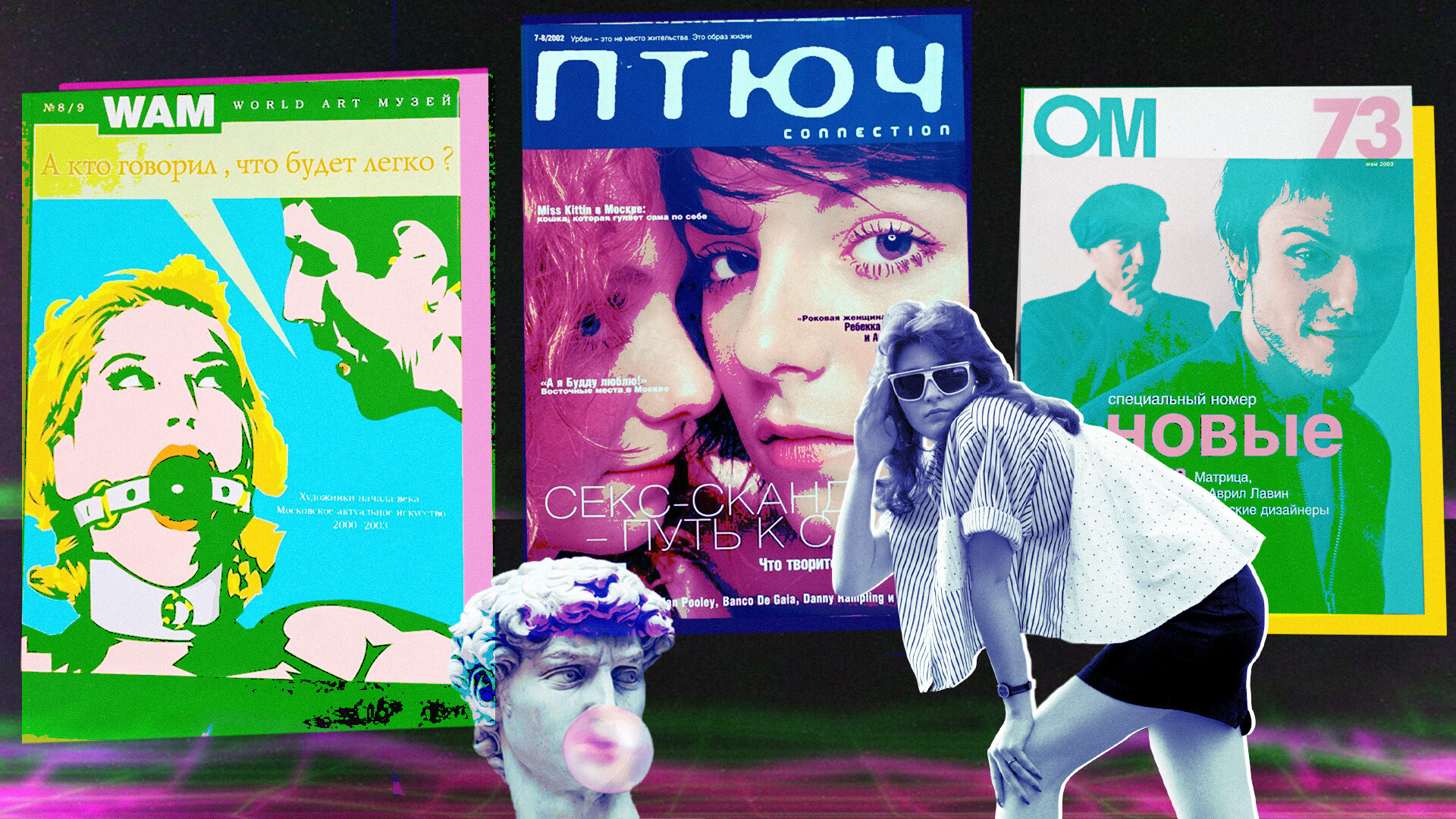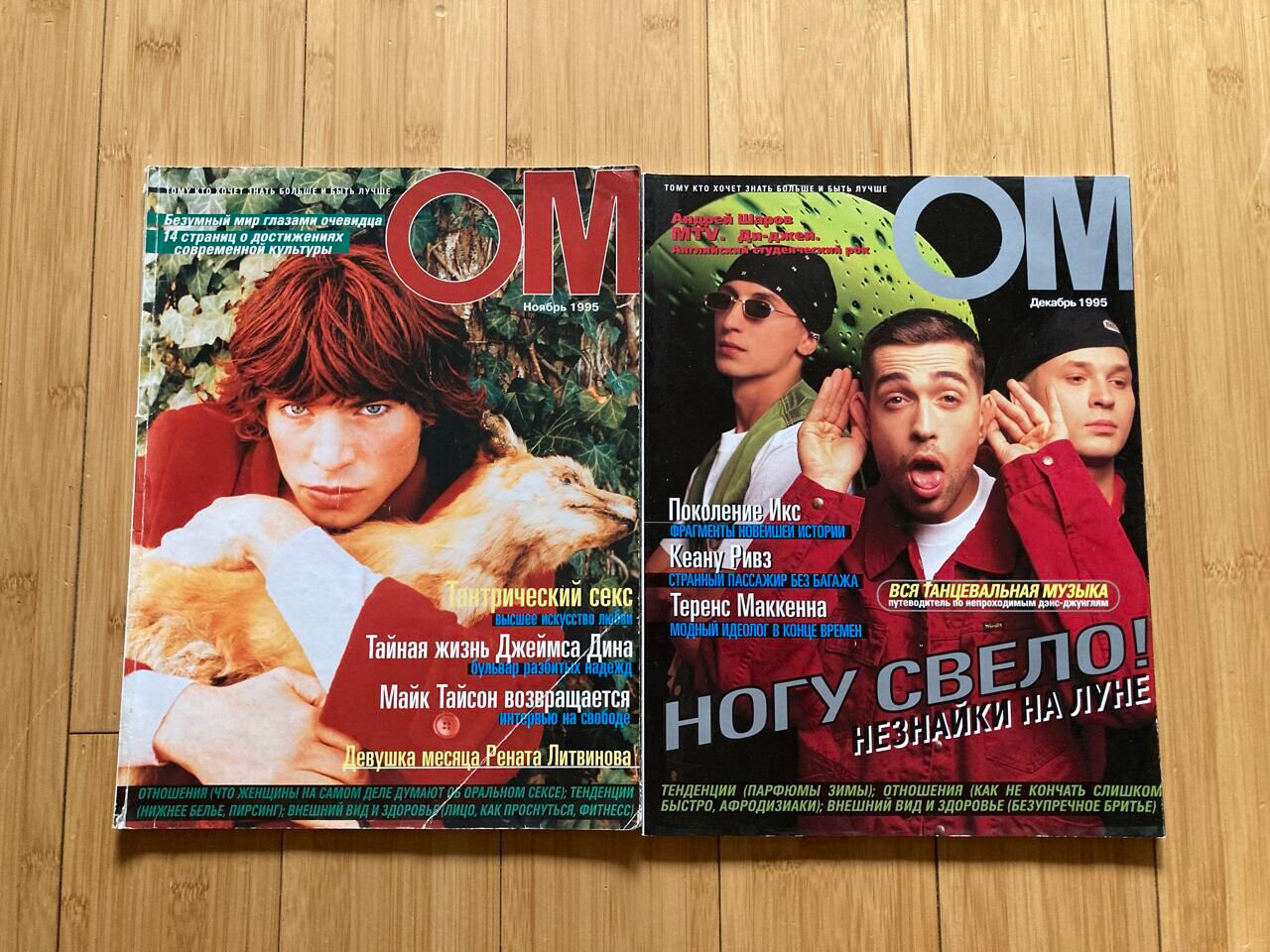7 ICONIC Russian publications of the 2000s

‘Kommersant’

The main news publication of modern Russia traces its history back to the end of the 1980s. The newspaper began to be printed in 1989; and, starting from 1990, it was printed on a regular basis. But, the publication still appeals to its pre-revolutionary history (that’s why, in the Russian version of its name, the pre-revolutionary letter Ъ ‘yat’ was kept) as a newsletter from the beginning of the 20th century. A cooperative with the ironic name ‘Fact’ began issuing the newspaper, with the Union of Cooperators behind it. The name reflected its message: the publication addressed the business community that was forming in Russia, which required facts or at least some information on what was happening in the new, non-planned economy.
The newspaper quickly became the “loudspeaker” of its interests. The project, having amassed its intended audience, changed hands repeatedly (among the most odious of its owners – notorious businessmen Boris Berezovsky and Badri Patarkatsishvili), until it was purchased by its current owner, Alisher Usmanov. In the 2000s, Kommersant’s articles covered all areas of life of Russian society. Their interpretations of particular events became defining for many. For example, the definition of the newborn post-perestroika social class – ‘new Russians’ – came from the pages of this newspaper, which became significant for the Russian mentality in contemporary history.
‘Afisha’

As ‘Kommersant’ formed the business agenda of the day, ‘Afisha’ was responsible for recreation. This magazine emerged in 1999 and immediately became very popular, since it had no competition. In the 2000s, it was the main guide for the events in the capital. It was here where new movie-, art-, gastro-, music- and literature critics were born, who reviewed new menus, exhibitions, albums, movies and books. The explosive growth of entertainment supplied the publication with near-infinite material. The magazine quickly became a trendsetter.
Later, the publication added St. Petersburg to its sphere of influence. Its focus had also widened: fashion and beauty reviews took up a significant part of the magazine. The ‘Afisha’ columnists became stars of Russian entertainment journalism; and the ‘Afisha’s Picnic’ festival, organized by the publication for many years, became the main event of every summer.
Global stars communicated to Russian audiences through its pages. If ‘Kommersant’ became a bible for the business community, ‘Afisha’ became the same for the creative class (which, in many respects, was formed by the publication). The magazine is still published today, with an increasing presence online. ‘Afisha’s website is considered by many to be the main guide for events in Moscow (with affiliate offices and websites in most of the other major cities across Russia), as well as an aggregator for selling concert & event tickets.
‘Medved’ (‘Bear’)

The first men’s glossy magazine in Russia, the predecessor of GQ and Esquire, appeared in 1995. The magazine was founded by an editorial team that included Vlad Listyev, considered the main media figure of the 1990s. Its very Russian name concealed its quite Western content (and very similar to the contents of ‘Playboy’ magazine): men’s fashion, art and music reviews. A significant part of it was occupied by articles about politics and social longreads (of the conservative-populist type).
The influencers of the 2000s from the ‘Medved’ shortlist were Bill Clinton, Giorgio Armani and, for example, Russian TV host Leonid Parfyonov. The magazine was closed in 2011, unable to compete with large Western media holdings entering the Russian market.
‘Ptyuch’

The main “loudspeaker” of the underground culture of the new Russia, ‘Ptyuch’ is still remembered by many. The magazine became the flagship of the interests of Generation X, as it was called back then. It expressed the very spirit of the era – absolute freedom (often reaching excessive freedom of behavior). The editors of the magazine, headed by Igor Shulinsky – the flesh and blood of this new era – played upon the interests of the bright, new youth – “the hip crowd”. ‘Ptyuch’ talked about uncensored sex, prohibited substances, liked obscene language and loved clubbing (a night club of the same name existed parallel to the publication).
Interviews with the voices of odious fashion trendsetters of the decade, like artist Vladislav Mamyshev-Monroe, sounded from the magazine’s pages. In many respects, it was ‘Ptyuch’ that hyped up such headlining music genres of the 2000s as rave, trance and techno. Apart from music, the magazine talked about alternative fashion, movies and exhibitions. Partially, ‘Ptyuch’ is attributed with forming the new Russian cultural underground.
‘OM’

‘OM’ magazine, a glossy cultural magazine, as we would call it today, appeared almost at the same time as ‘Ptyuch’, but it wasn’t as radical. The editors considered it their task to talk about everything that was trendy: from music to fashion. It was among the first to publish the usual lists – what to wear, where to go, etc. And people followed ‘OM’s dictate. The magazine itself became fashionable and formed the mainstream agenda in everything lifestyle-related for over ten years (it was closed in 2006). The hybrid format of an alternative glossy magazine, however, didn’t stick; the powerful intervention of the Russian versions of legendary Western magazines, like Vogue and Tatler, stripped ‘OM’ of any chance for survival.
WAM (‘World Art Museum’)

This vivid publication of the 2000s in the field of art journalism can be found today in second-hand book departments and in book aggregators. The first glossy magazine in Russia about art on a global level was released six times per year on luxurious paper and as a limited edition. It was so advanced, many perceived it as an almanac. Every issue was dedicated to a certain era or phenomenon. These days, it can still be used as an encyclopedia of sorts. Several years later, this conceptual publication grew into a book format, although keeping its name.
Thematic issues like ‘Moscow’s contemporary art 2000-2003’ or ‘Russian actionism’ fully covered everything that was happening on the Russian art scene. However, this luxurious glossy publication and, then, a full-scale illustrated album, turned out to be an expensive “toy”, even for these years. At the end of the decade, its publisher, famous designer Arseny Mesheryakov, closed it.
‘Megapolis-Express’

This is the first Russian tabloid, which created the very genre of ‘yellow press’ in Russia. It started off as a news publication (which, for example, hosted the articles of the famous Anna Politkovskaya). But, in 1994, the pilot project went bankrupt and it was decided to reinvent it, taking as an example something similar to Great Britain’s ‘The Sun’. The cover was adorned by a portrait of a star with a catchy headline. Corresponding topics filled the publication, although serious journalists, famous in different fields, also wrote pieces for it.
The newspaper broke sales records, but many articles in it were fabricated by the editors. In the end, the publication never recovered from these daming verdicts (it was closed in 2005). However, the invasions of mutant rats and interviews with “spiderwomen” and practicing Stalinist sorcerers became a vivid start of the birth of Russia’s yellow press.

